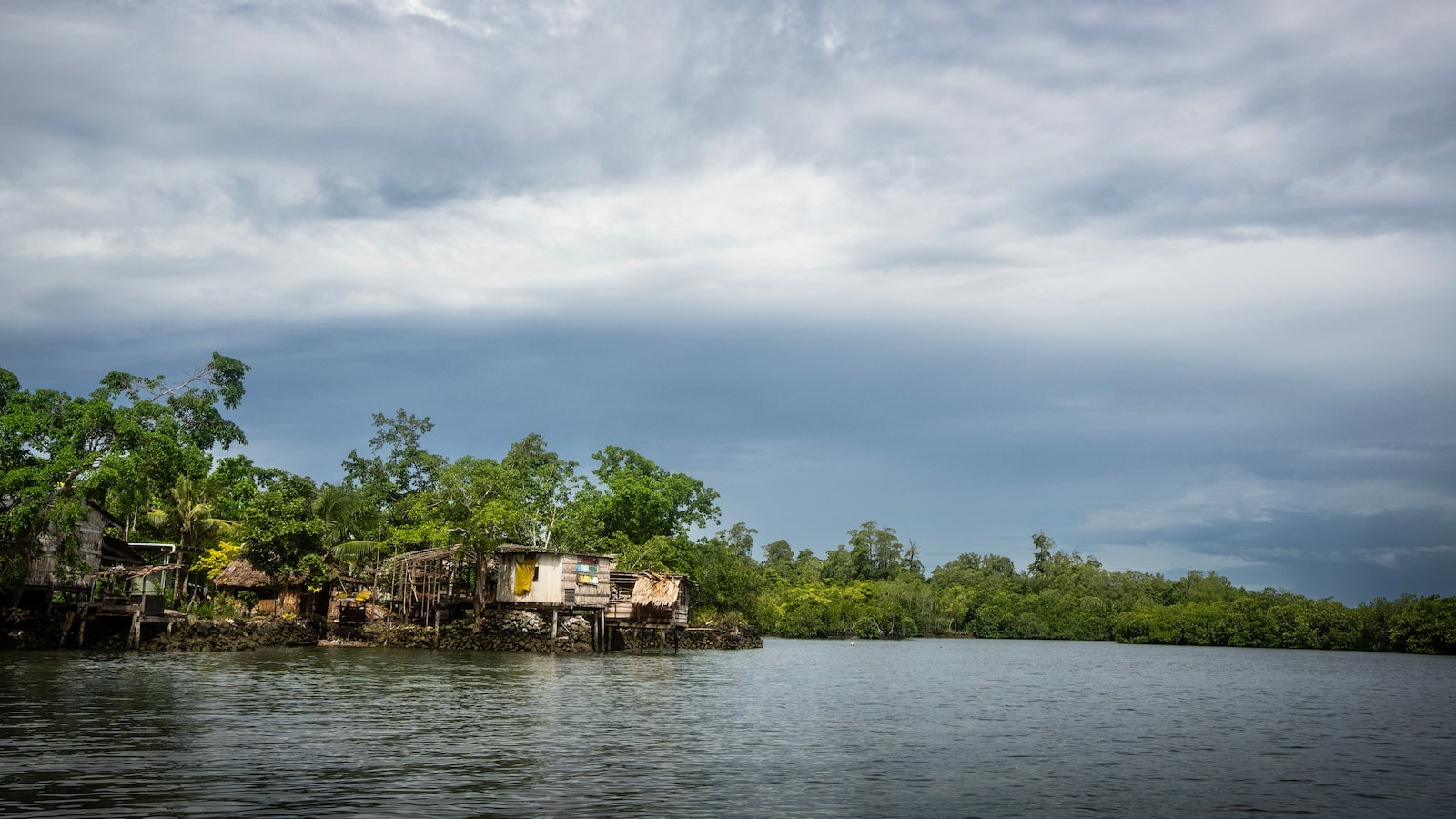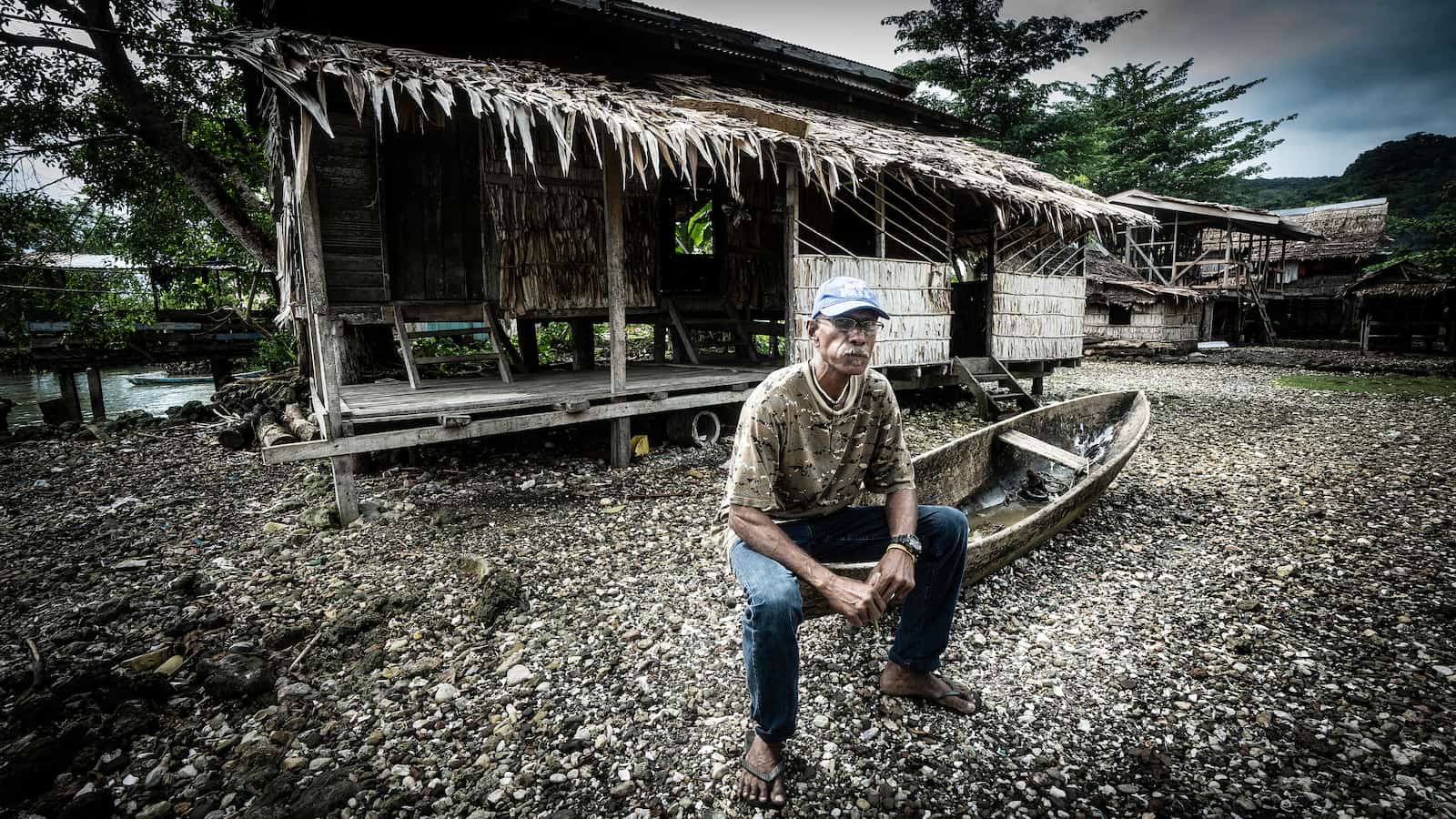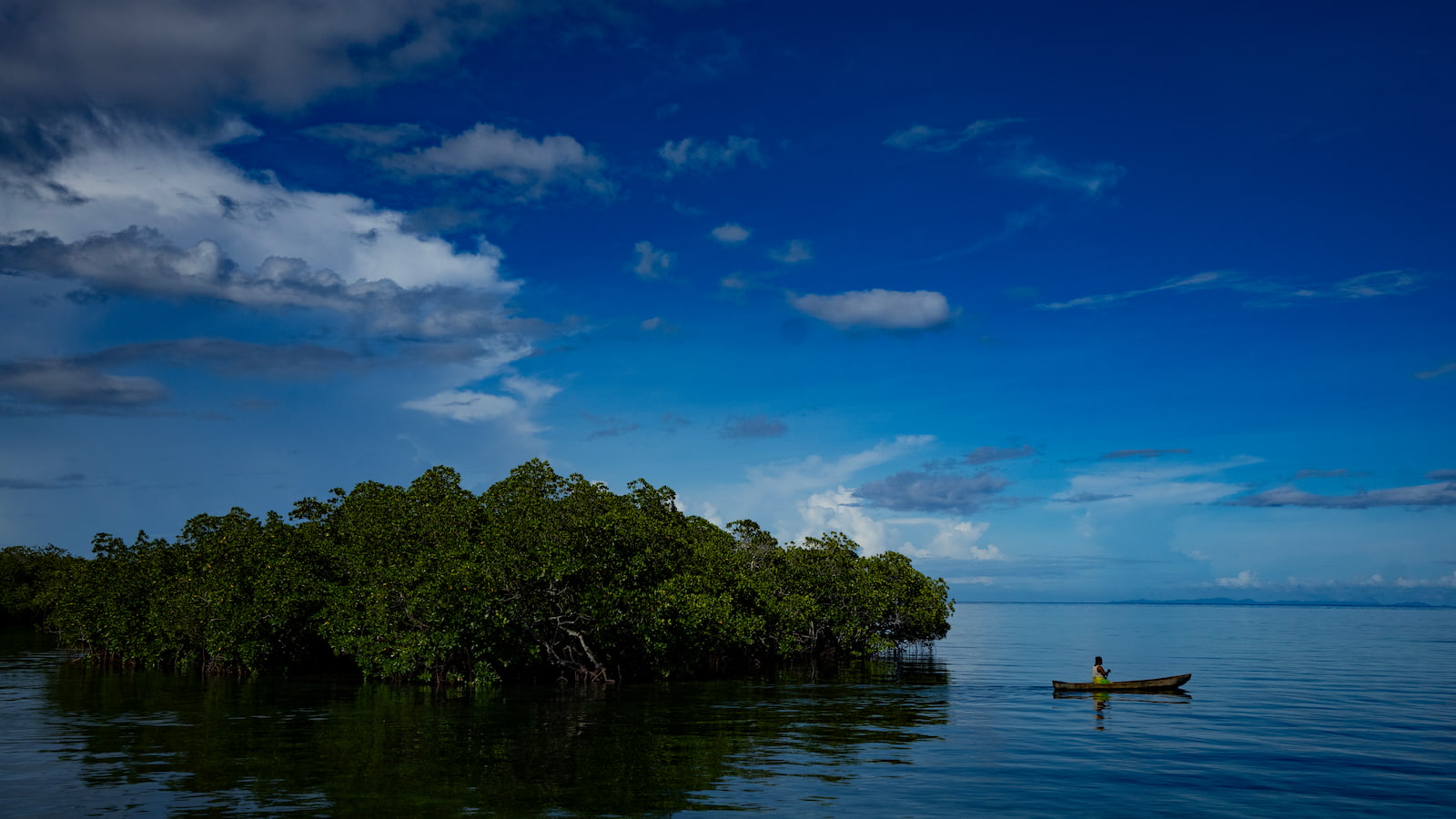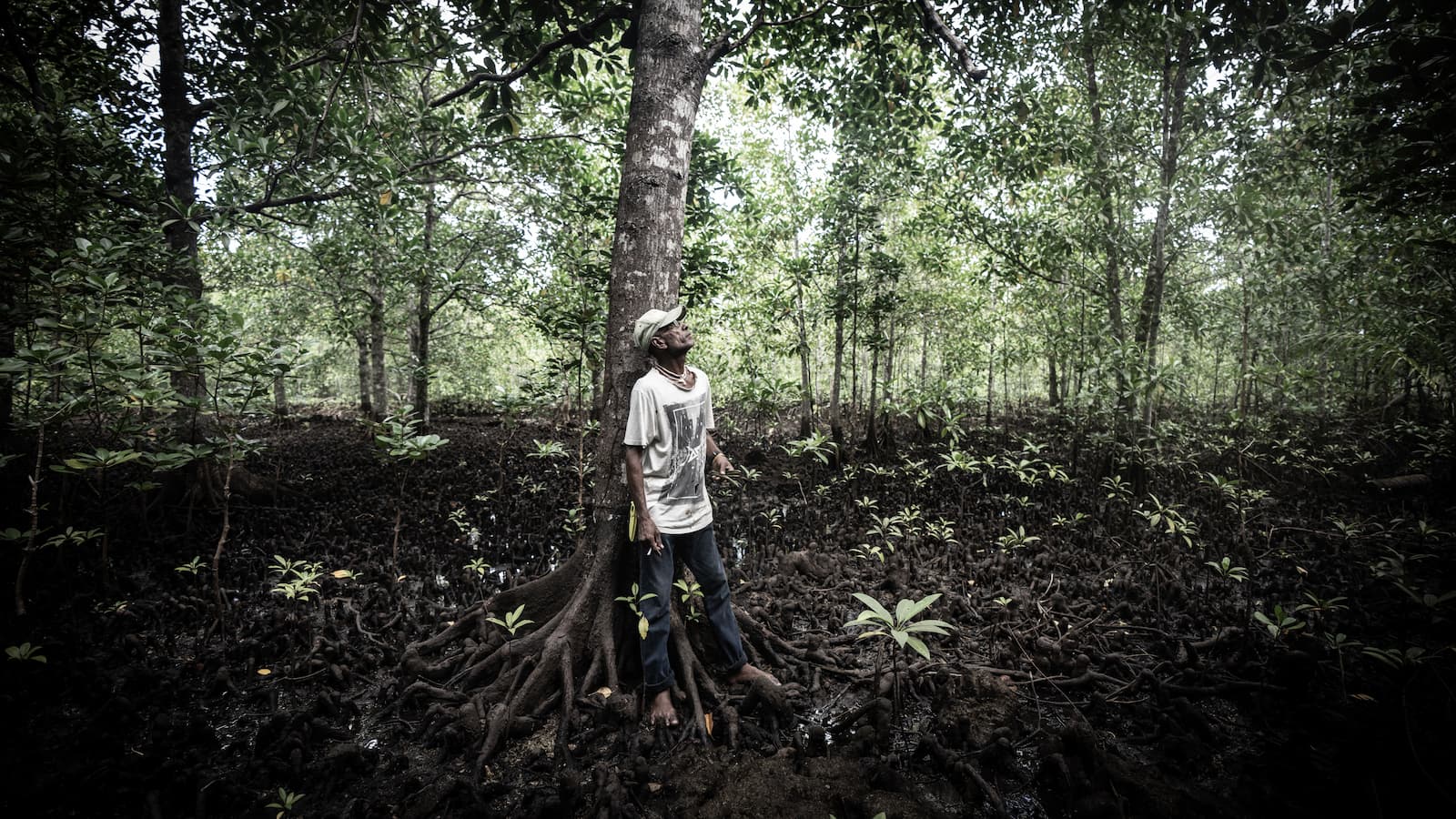How mangrove restoration can safeguard the Solomon Islands
A self-taught environmentalist from a coastal village is helping to protect his community, one mangrove at a time
November 6, 2025
In the quiet morning light of Langalanga Lagoon in the Solomon Islands’ Malaita Province, the tide drains the last of the crystal-clear water through a tangled maze of mangrove roots.
Moving carefully through the muddy forest, 59‑year‑old Ben Waleilia searches for seedlings. His bare feet sink into the cool earth, toes curling instinctively like the roots of the trees around him. Gently, he picks up each fragile shoot and drops it into a plastic bucket.
For Waleilia, the community leader of the coastal village of Oibola and a self‑taught conservationist, this work is personal. He is leading a grassroots mangrove replanting initiative to defend his home from the twin threats of rising seas and coastal erosion.

“When my father inherited this land from my grandfather, he cleared many mangrove trees to build a bigger home for his nine children,” Waleilia says. “I don’t think he realised the impact it would have. Years later, when I inherited the land, there were fewer fish, and the sea was creeping in.”
He gestures toward a bare strip of land, now unusable.
“My grandfather used to grow vegetables here. When the king tides come, it floods with saltwater. Nothing grows anymore, except mangroves.”
From local action to global partnerships
What began as a government training workshop on climate change, mangrove conservation, and poverty alleviation sparked a lifelong mission for Waleilia.
“After that, I wanted to learn everything I could about mangroves, how they store carbon, support fisheries, protect coral reefs, filter water, and defend the land from waves and erosion. The list just kept growing.”
Mangroves have long been undervalued, often dismissed as mosquito‑ridden swamps. Yet in the Solomon Islands they are life‑sustaining. They provide timber and firewood, support diverse marine life, and protect shorelines from erosion.

Mangrove forests naturally regenerate through floating seeds, which settle in suitable coastal mudflats. But human impacts often disrupt this process. Sometimes, nature needs a helping hand.
Meshach Sukulu, a lead researcher with in the provincial capital Auki, says these functions are critical.
“Communities around Langalanga Lagoon have seen their mangroves vanish over the decades,” he says. “The area is known for its artificial islands built on coral, and the people rely heavily on marine resources. Restoring mangroves is essential to their future.”
As populations grow and the demand for timber rises, the loss of mangroves has accelerated. In response, local communities are working with international agencies, the Solomon Islands Government, and non‑government partners for solutions.
The Pathways Project
Some of those solutions are coming forth from the Pathways Project, a long‑running ÁñÁ«ÊÓƵapp of ÁñÁ«ÊÓƵapp (UOW)-led initiative that supports collaboration between the Solomon Islands Ministry of Fisheries, WorldFish (an international research organisation focused on fisheries and development), and UOW.
Funded by the Australian government, the project, led by researchers such as , supports community‑based resource management across the Pacific, combining local knowledge with scientific research to restore ecosystems while improving livelihoods.
“Through the Pathways Project, we’ve seen villages like Oibola not only restoring mangroves, but also developing skills and governance systems around resource management,” Mr Sukulu says. “It’s about building resilience, culturally, socially, and environmentally.”

For UOW, the partnership extends its long‑standing expertise in community‑based fisheries management at the Australian National Centre for Ocean Resources and Security (ANCORS). The ÁñÁ«ÊÓƵapp’s researchers contribute by co-developing research, evidencing impacts, and providing training frameworks for capacity‑building. Together with Pacific partners, this ensures that science translates directly into action on the ground.
Replanting mangroves not only helps secure natural resources but also provides long-term protection for communities.
“Langalanga Lagoon is one of Malaita’s most vulnerable areas. Mangrove planting could be key to shielding entire villages from erosion, wave surges, and rising seas,” Mr Sukulu says. “The aim was always to improve livelihoods while protecting and restoring ecosystems. Ten years on, small villages like Oibola are still planting, and still learning.”
Planting for the future
On his small waterfront property, Mr Waleilia proudly shows a planting site where, so far, he has established nurseries and replanted more than 16,000 mangrove trees.
“To an untrained eye, all mangroves look the same,” he says. “But there are many varieties. Some even produce fruit that’s used in traditional foods, so they’re a win‑win.”

For the people of Oibola - renowned for their shark‑worship beliefs, shell‑money production, and wooden boat‑building - the mangroves are tied to culture as much as survival.
Mr Waleilia is hopeful, but realistic. Years ago, when he first noticed the disappearing trees and receding coastline, he knew he had to act.
“I couldn’t just sit back and watch the forest vanish. I had to do something. I can plant trees, but we also need global change. Developed countries must reduce their carbon emissions if small island communities like ours are to survive.”
Support from organisations such as WorldFish, and the knowledge exchange provided through the Pathways Project, has reinforced his mission.
“They’ve helped us understand community‑based fisheries and how to manage our resources better,” he says. “People talk about climate change, but for me, it was simple - the mangroves were gone, and the sea had nothing to hold it back.”

In asking Mr Waileilia on what the future looks like, he notes "I just want my village to stay where it is, so our children can keep fishing and living on our land […] Not everyone shares my passion; some still cut mangroves for firewood because they have no choice. But I have hope. With more stories, more support, and more collaboration, change is possible. I’m not the problem, I’m part of the solution.”
For more information on the Pathways Project